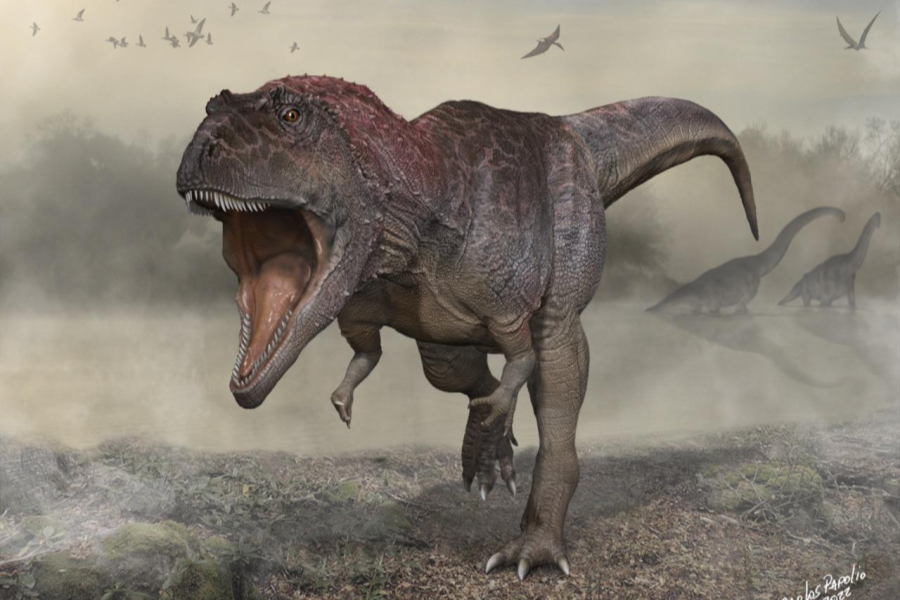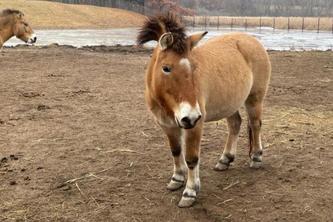A new giant dinosaur gives insight into why many prehistoric meat-eaters had such tiny arms

A team co-led by University of Minnesota Twin Cities researcher Peter Makovicky and Argentinean colleagues Juan Canale and Sebastian Apesteguía has discovered a new huge, meat-eating dinosaur, dubbed Meraxes gigas. The new dinosaur provides clues about the evolution and biology of dinosaurs such as the Carcharodontosaurus and Tyrannosaurus rex — specifically, why these animals had such big skulls and tiny arms.
The study is published in Current Biology, a peer-reviewed scientific biology journal.
The researchers initially discovered Meraxes in Patagonia in 2012 and have spent the last several years extracting, preparing and analyzing the specimen. The dinosaur is part of the Carcharodontosauridae family, a group of giant carnivorous theropods that also includes Giganotosaurus, one of the largest known meat-eating dinosaurs and one of the reptilian stars of the recently released “Jurassic World: Dominion” movie.
Though not the largest among carcharodontosaurids, Meraxes was still an imposing animal measuring around 36 feet from snout to tail tip and weighing approximately 9,000 pounds.
Meraxes is among the most complete carcharodontosaurid skeletons paleontologists have found in the southern hemisphere to date.
“The neat thing is that we found the body plan is surprisingly similar to tyrannosaurs like T. rex,” said Makovicky, one of the principal authors of the study and a professor in the University of Minnesota N.H. Winchell School of Earth and Environmental Sciences. “But, they’re not particularly closely related to T. rex. They're from very different branches of the meat-eating dinosaur family tree. So, having this new discovery allowed us to probe the question of, ‘Why do these meat-eating dinosaurs get so big and have these dinky little arms?’”
With the statistical data that Meraxes provided, the researchers found that large, mega-predatory dinosaurs in all three families of therapods grew in similar ways. As they evolved, their skulls grew larger and their arms progressively shortened.
The possible uses of the tiny forelimbs in T. rex and other large carnivorous dinosaurs have been the topic of much speculation and debate.
“What we’re suggesting is that there’s a different take on this,” Makovicky said. “We shouldn’t worry so much about what the arms are being used for, because the arms are actually being reduced as a consequence of the skulls becoming massive. Whatever the arms may or may not have been used for, they’re taking on a secondary function since the skull is being optimized to handle larger prey.”
The research was funded by the National Geographic Society, Municipalidad de Villa El Chocón, Fundación “Félix de Azara” and the Field Museum in Chicago.
About the College of Science and Engineering
The University of Minnesota College of Science and Engineering brings together the University’s programs in engineering, physical sciences, mathematics and computer science into one college. The college is ranked among the top academic programs in the country and includes 12 academic departments offering a wide range of degree programs at the baccalaureate, master's, and doctoral levels. Learn more at cse.umn.edu.
- Categories:
- Science and Technology
- Science





